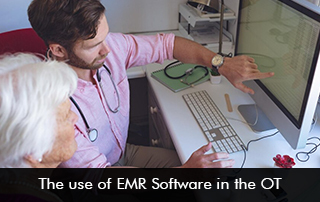Operating theatre (OT) is a critical hub for healthcare delivery, necessitating seamless coordination and precision decision-making. Electronic Medical Records (EMR) Software is a game-changer that simplifies workflows and optimizes surgical outcomes and patient care. Integrating technology with the OT also helps providers ensure optimal pre-operative planning, intra-operative efficiency, and post-operative management.
EMR Software Benefits for Providers and Patients
To patients, EHR Software guarantees the improvement of surgical results through documentation, monitoring, and minimizing mistakes. Providers enjoy minimized steps in the work processes; improved information exchange within interdisciplinary teams; and the ready accessibility of complete reference information about patients’ status and histories. This will help with decision-making and the management of resources.
Pre-operative Assistance with EMR Software
Before surgery, Electronic Health Records (EHR) Software assists in comprehensive preparation through comprehensive patient information, diagnosis, and imaging studies. They are useful in previewing allergies, co-morbidities, and past surgeries, reducing dangers during surgeries. Included pre-surgical checklists in EMR systems help to avoid any delays and potential complications and improve patients’ outcomes.
Intra-operative Support with EHR Software
The EMR Software is fully integrated with anesthesia and surgical reporting during the operation. The robust technology allows information visualization such as patient vital signs and surgical documentation. This helps the surgical team to closely monitor the conditions of their patients to be in a position to respond to the conditions appropriately. Integrating with high-level technologies like AI analytics to identify patterns and offer insights increases accuracy during a complicated process. Furthermore, EHR systems can record surgical actions in real-time capturing regulatory compliances and generating an extended procedure.
Post-opt Care Management with EMR Software
In management after surgery, electronic medical records software ensures that there is proper development of discharge plans as well as medication procedures and follow-up appointments. It provides an ability to track patient outcomes through telemedicine or by connecting it with wearable gadgets. Consequently, there will be follow-up care thus minimizing readmissions and patients’ satisfaction.
Key Features in EMR Software that Empower Surgeons
The following tools in Electronic Health Records (EHR) Software can be leveraged by surgeons for modern patient care and to improve patient safety levels.
- Surgical templates in the EMR Software are available for particular procedures.
- Decision Support Tools provide evidence-based guidelines.
- Interoperability options in EHR Software facilitate seamless data exchange between other departments to offer holistic care. Seamless care coordination also helps to reduce any gaps in care. The ONC is working towards boosting interoperability by participating in initiatives like the Trusted Exchange Framework and Common Agreement (TEFCA).







